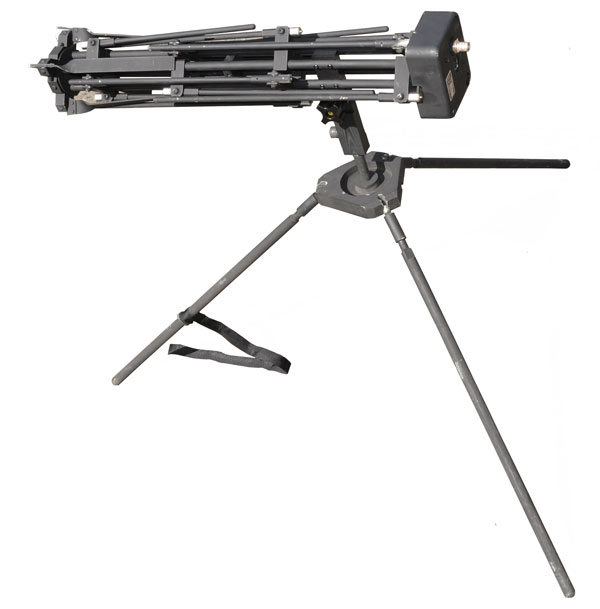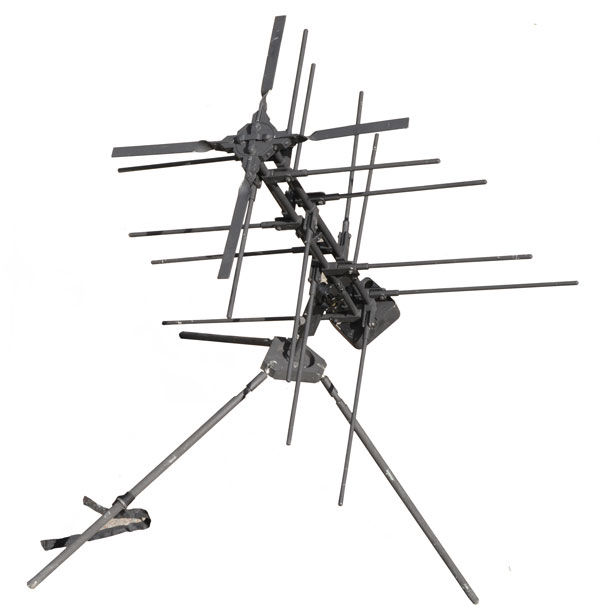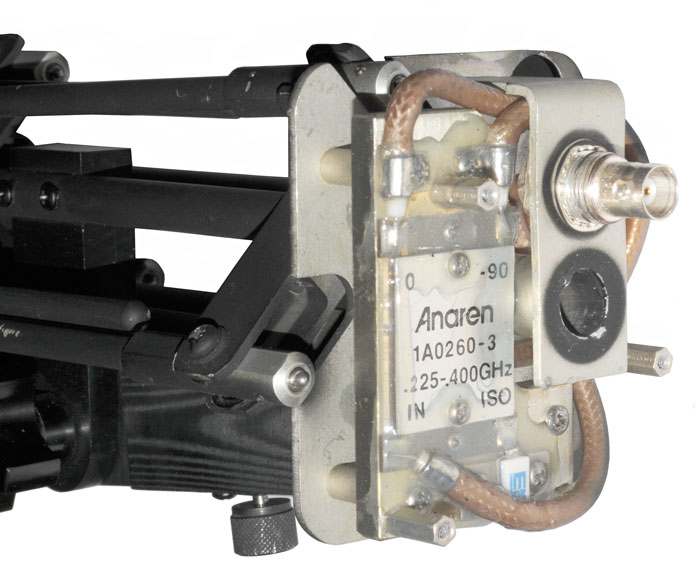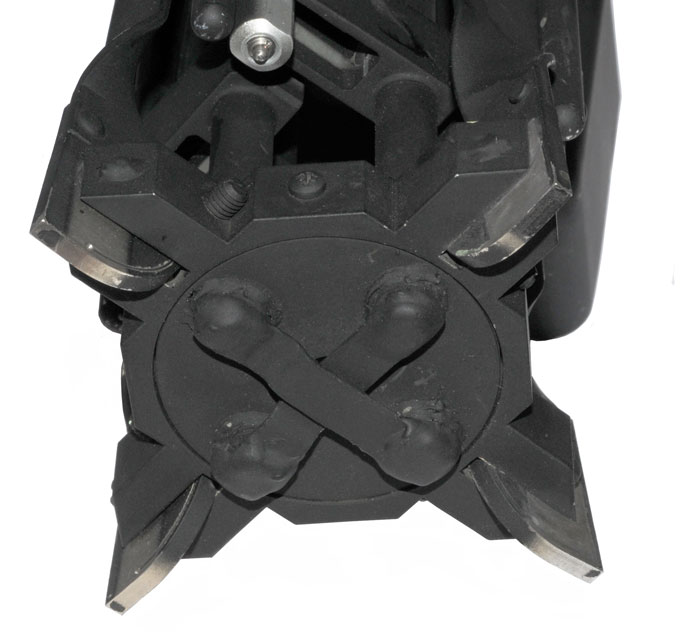Dorne & Margolin C152-1-1
The boom length, including the BNC connector, is just under 20" and does not telescope. But all the elements are hinged to allow a compact package for shipment. The tripod legs can be pulled out of the head and folded so they point up and then fed through two holes in the connector box on the back of the antenna making for a very compact package. Each element has a spring loaded detent mechanism that holds it in place when in the operational position. These have the feel of a precision machine. |
Shown in shipping
configuration. Tripod top at left, then electrical box, then antenna. |
 |
Another view of antenna in
ship configuration. The bottom of the tripod head can be seen. |
 |
The Tripod has been pulled
out of the antenna. |
 |
Antenna (still folded for
ship) mounted on tripod. |
 |
Fully deployed. |
 |
Another view fully
deployed. |
 |
The two top holes are for
the tripod legs in the stowed position. It's not clear what the center hole is used for? Maybe there's an alternate tripod/mount that uses this hole? Let me know. |
 |
Instead of using
transmission lines to do the phasing needed to generate
circular polarization this antenna uses a 90 degree hybrid
coupler. The BNC connector feeds the IN port and a termination is on the ISOlated port. The 0 and -90 degree ports feed adjacent tubes in the antenna structure. This is done by running the coax up the tube and connecting at the front of the antenna where the elements are diagonally connected. The BNC connector shows a DC short and that's normal since there is a DC path from the IN port to the -90 port which in turn is connected to ground. |
 |
Front of antenna showing
the electrical connection between diagonal supports. |